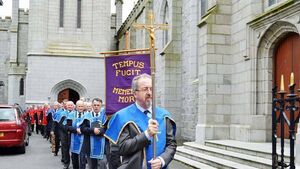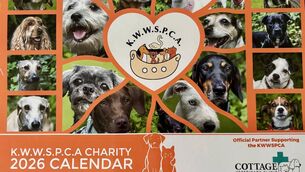Fraternal groups need to be revived

Knights of Columbanus in Newry
I WROTE a few weeks back about how much of our community life has disintegrated over the years.
Elderly Irish tell me that people used to go to each other’s houses on winter nights and tell stories, used to bring musical instruments that they knew how to play, and used to sing old songs together, since everyone knew those songs and could sing well and without embarrassment.
I mentioned that this was true in my native USA as well, as seen in the “funny pages” or cartoons of American newspapers, which have changed little over the years and thus provide a window into the America that was.
Yet in his excellent book , sociologist Robert Putnam used dozens of polls, surveys, diaries and other statistics to back up their depiction of what American life used to be, a culture rich with neighbourhood gatherings, card games, fraternal lodges, dinner parties, bowling leagues, PTA meetings, political caucuses, town bands, Boy Scouts and many other groups.
In Ireland over the last few centuries, neighbours used to assemble “mutual-improvement societies” training their members not only to read at a time when where was little public education, but to understand and debate scientific and political issues of the day.
They organised adult schools, subscription libraries, reading circles, dramatic societies, and musical groups.
Other volunteer associations organised to pay each other’s medical bills, unemployment benefits, and burials, to offer savings banks and job referral services – and by 1880 as much as 80 per cent of all male workers belonged to such groups.
It was only through their loyal support and intense political organisation, for example, that someone like Ramsey MacDonald, illegitimate son of a farmhand, could rise to become Prime Minister of Great Britain.
Similarly, movies and television have given us hundreds of portrayals of American life through the decades, but rarely has any media showed the fraternal lodges that were part of so many Americans’ lives.
Most people have heard of the Freemasons as the inexplicable target of conspiracy theorists, or parodied as the Stonecutters on , but there were literally thousands of similar organisations, with chapters in almost every town and neighbourhood.
They included the Elk, the Odd Fellows, the Knights of Pythias, the Knights of Columbus, and such sadly extinct and magnificent-sounding organisations like the Prudent Patricians of Pompeii, the Modern Aztecs, and the League of Friendship of the Supreme Mechanical Order of the Sun.
Each lodge member contributed a small amount of money each week to a fund, and when any member took sick, the lodge typically gave them sick pay to cover the loss of employment.
Lodges often hired a doctor or nurse to check up on all its members; called lodge trade.
It offered work for thousands of medical professionals, and unlike our modern medical system, it was affordable and gave patients a say in their own care.
When a member died, the organisation often paid for the funeral and perhaps a pension for the widow(er) and children.
Many did more than that.
A lodge called the Knights of Labour evolved into the first labour union, and every union created since has followed its template.
As recently as the mid-20th-century a majority of Americans were members of these organisations – again, of both genders and all races. Of the 3,500 fraternal organisations that existed at the beginning of the 1900s, about 1,500 were African-American.
And while they are called “fraternal,” many existed solely for women and were run by women, some independent of any men’s organisation.
These organisations were deeply woven into community life for centuries, and their sudden and astonishing decline after the 1960s has been rarely commented on or even noticed.
These kinds of close communities lasted longer here than in the USA, but are fading here now as well — but this trend is not inevitable. These organisations did not appear in the landscape, after all they were organised, and could be again.






